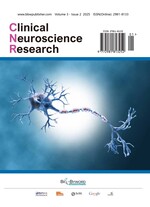Comparative Study on the Post-treatment Stability of Impacted Wisdom Tooth Extraction and Non-extraction Orthodontics in Different Age Groups
Abstract
Objective: To analyze the post-treatment stability of impacted wisdom tooth extraction and non-extraction orthodontics in different age groups. Methods: 83 patients undergoing orthodontic treatment in the hospital from January 2021 to June 2024 were selected as the study subjects. All patients received orthodontic treatment with the straight wire appliance technique. They were divided into groups according to whether they received a tooth extraction. The control group (n=39) did not undergo impacted tooth extraction, while the observation group (n=44) underwent impacted tooth extraction. The PAR index, changes in inflammatory response factors PGE2, IL-6, and TNF-α, and the incidence of complications were compared between the two groups. Results: Before treatment, there was no difference in the PAR index between the two groups (P>0.05). However, after nearly 2.5 years of follow-up orthodontic treatment, there was a significant difference (P<0.05), with the observation group having a lower PAR index than the control group. Before treatment, P>0.05 for both groups. Within 7 days after tooth extraction, the levels of PGE2, IL-6, and TNF-α in the observation group were significantly higher than those in the control group, with a statistically significant difference (P<0.05). After nearly 2.5 years of follow-up treatment, the incidence of complications was found to be lower in the observation group. Conclusion: For patients with impacted wisdom teeth, orthodontic treatment after tooth extraction can maintain the teeth in normal dentition, adjust the relationship between the upper and lower jaws, improve occlusion function, and reduce the rebound phenomenon and complications after orthodontic surgery.
References
Mu MK, Lu XL, Zhan W, et al., 2008, Evaluation of the Orthodontic Effect of Extraction and Non-Extraction Treatment for Angle’s Class III Malocclusion Using the PAR Index. Journal of Harbin Medical University, 42(2): 174–175 + 178.
Zou H, Peng YJ, 2024, Comparison of Clinical Efficacy between Invisalign Appliance and Damon Q Self-Ligating Bracket in Non-Extraction Treatment of Dental Crowding. Chinese Journal of Aesthetic Medicine, 33(1): 125–129.
Zhou XR, Yang QQ, Feng H, et al., 2022, Study on the Effect of Invisalign Appliance in Non-Extraction Treatment of Dentition Defect with Malocclusion. Chinese Journal of Aesthetic Medicine, 31(12): 153–156.
Lai SY, Hou JX, 2020, Progress in the Application of Alveolar Ridge Preservation at Extraction Sites of Non-Periodontal and Periodontal Teeth. Chinese Journal of Stomatology, 55(4): 266–270.
Chai A, Lei RC, Jiang ZS, et al., 2023, Overview of Methods for Assessing the Difficulty of Extracting Mandibular Third Molars. International Journal of Stomatology, 50(6): 718–722.
Liu JY, Liu C, Pan J, et al., 2021, Application of Distal Triangular Flap in the Extraction of Impacted Mandibular Third Molars. West China Journal of Stomatology, 39(5): 598–604.
Li TT, Wang CF, Cai Y, et al., 2024, Study on the Effect of Residual Dental Follicle after Extraction of Impacted Mandibular Third Molars on the Periodontal Health of Adjacent Teeth. Chinese Journal of Stomatology, 59(8): 784–790.
Xing JH, Chen H, Chen M, et al., 2023, Study on Tooth Drift after Orthodontic Treatment Interruption Following Tooth Extraction. Journal of Prevention and Treatment of Stomatological Diseases, 31(10): 727–732.
Liu L, Dong T, Yuan LJ, et al., 2019, Preliminary Morphological Study of the Temporomandibular Joint before and after Orthodontic Tooth Extraction. Chinese Journal of Orthodontics, 26(4): 209–214.
Ouyang D, Hu DS, Yang JX, et al., 2021, Study on the Efficacy of Orthodontic Treatment Combined with Implant Anchorage for Dental Deformities and its Impact on the PAR Index. People’s Military Surgeon, 64(4): 352–355.
Wang YN, Chang L, Liu HY, 2016, Analysis of Influencing Factors in Evaluating the Orthodontic Treatment Effect of 80 Patients Using the PAR Index. Journal of Practical Stomatology, 32(2): 263–267.
Li XR, Chen B, Li M, et al., 2023, Preliminary Application of PAR Index Combined with Cephalometric Measurement in Evaluating the Efficacy of Skeletal Class III Malocclusion. Shanghai Journal of Stomatology, 32(4): 417–421.

